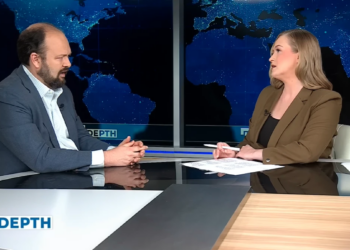What if they gave an oil price spike and nobody came? That is admittedly kind of a lame play on an old saying about parties, but it’s exactly what has happened over the two weeks since June 12, when Israel launched its initial assault on Iran.
At that day’s close of trading, the domestic U.S. WTI price sat at $68.04 per barrel. As of this writing on June 24, the price stands at $64.50. That’s not just the absence of a price spike, it is the opposite of one, a drop of 5% in just two weeks.
So, what happened? Why didn’t crude prices spike significantly? For such a seemingly complex trading market that is impacted daily by a broad variety of factors, the answer here is surprisingly simple, boiling down to just two key factors.
- Neither Israel nor the United States made an effort to target Iran’s refining or export infrastructures.
- Despite some tepid, sporadic saber rattling by Iranian officials, they mounted no real effort to block the flow of crude tankers through the region’s critical choke point, the Strait of Hormuz.
Hitting Iran’s infrastructure could have taken its substantial crude exports – which the International Energy Agency estimates to be 1.7 million barrels per day – off the global market, a big hit. Shutting down the Strait of Hormuz, through which about 20% of global crude supplies flow every day, would have been a much bigger hit, one that would have set prices on an upward spiral. (RELATED: FBI Launching Probe Into Leaked Iran Damage Report, Hegseth Says)
But the oil kept flowing, muting the few comparatively small increases in prices which did come about.
Respected analyst David Ramsden-Wood, writing at his “HotTakeOfTheDay” Substack newsletter, summed it up quite well. “Oil is still structurally bearish. U.S. producers are in PR mode—talking up ‘Drill, baby, drill’ while actually slowing down. Capex is flat to declining. Rig counts are down. Shareholders want returns, not growth. So we’re left with this: Tension in the Middle East, no supply impact, and U.S. production that’s quietly rolling over. Oil shrugged.”
There was a time, as recently as 10 years ago, when crude prices would have no doubt rocketed skywards at the news of both the commencement of Israel’s initial June 12 assault on Iran’s military and political targets and of last Saturday’s U.S. bombing operation. In those days, we could have expected crude prices to go as high as $100 per barrel or even higher. Markets used to really react to the “tension in the Middle East” to which Ramsden-Wood refers, in large part, because they had no real way to parse through all the uncertainties such events might create.
Now it’s different. Things have changed. The rise of machine learning, AI and other technological and communications advancements has played a major role.
In the past, a lack of real-time information during any rise in Middle East tensions left traders in the dark for some period of time – often extended periods – about potential impacts on production in the world’s biggest oil producing region. But that is no longer the case. Traders can now gauge potential impacts almost immediately.
That was especially true throughout this most recent upset, due to President Donald Trump’s transparency about everything that was taking place. You were able to know exactly what the U.S. was planning to do or had done just by regularly pressing the “refresh” button at Trump’s Truth Social feed.
Tim Stewart, President of the D.C.-based U.S. Oil and Gas Association, has a term for this. “The Markets are becoming much better at building the ‘47 Variable’ into their short-term models,” he said in an email. “This is not a Republican Administration – it is a Disrupter Administration and disruption happens both ways, so the old playbooks just don’t apply anymore. Traders are taking into account a President who means what he says, and it is best to plan for it.”
Add to all that the reality that a high percentage of crude trading is now conducted via automated, AI-controlled programs, and few trades are any longer made in the dark.
Thus, the world saw a price spike which, despite being widely predicted by many smart people, didn’t happen, and the reasons why are pretty simple.
David Blackmon is an energy writer and consultant based in Texas. He spent 40 years in the oil and gas business, where he specialized in public policy and communications.
The views and opinions expressed in this commentary are those of the author and do not reflect the official position of the Daily Caller News Foundation.
All content created by the Daily Caller News Foundation, an independent and nonpartisan newswire service, is available without charge to any legitimate news publisher that can provide a large audience. All republished articles must include our logo, our reporter’s byline and their DCNF affiliation. For any questions about our guidelines or partnering with us, please contact licensing@dailycallernewsfoundation.org.




![Man Arrested After Screaming at Senators During Big Beautiful Bill Debate [WATCH]](https://www.right2024.com/wp-content/uploads/2025/06/Man-Arrested-After-Screaming-at-Senators-During-Big-Beautiful-Bill-350x250.jpg)












